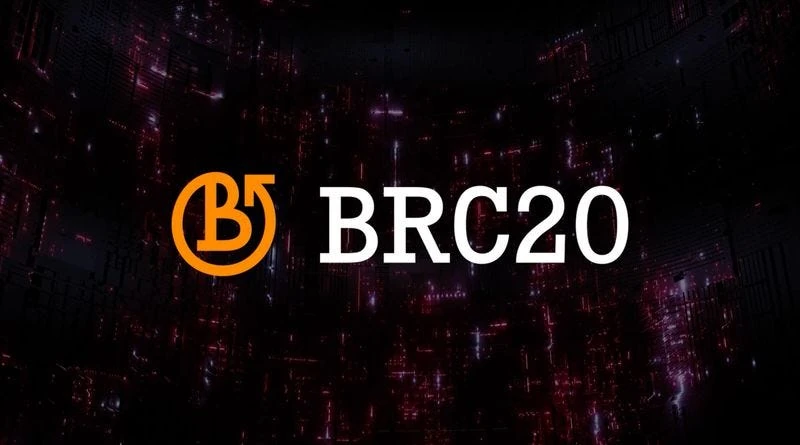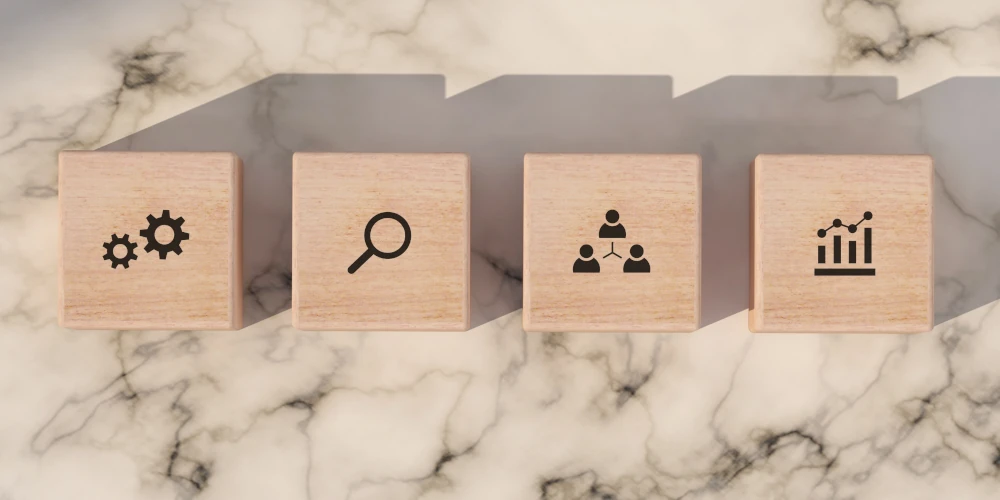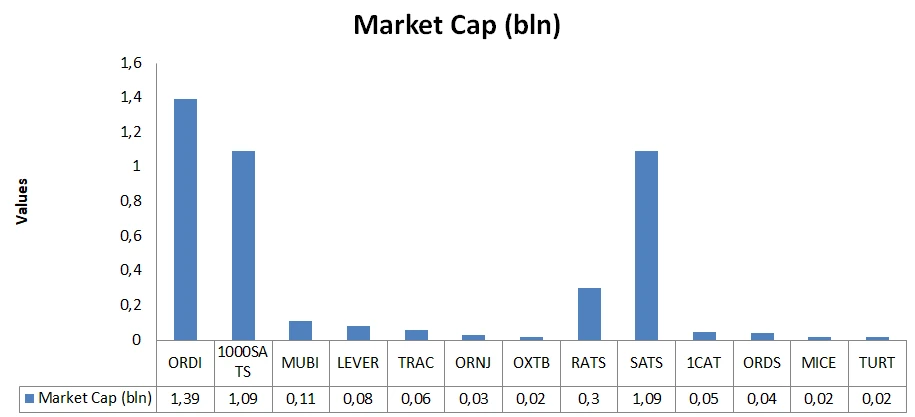Introduction
In fact, in 2023 new player has emerged od cryptocurrency market and it was BRC-20 tokens.
Built on the robust Bitcoin blockchain, this tokens leverage a similar token standard to Ethereum’s ERC-2 but they are different.
This opening up a world of possibilities for creating and managing digital assets on the Bitcoin network.
Of course, as an enthusiast in this space, I’m thrilled to dive into the exciting world of BRC-20 tokens. Then, continue exploration of their potential to shape the future of cryptocurrencies.
In this article, indeed, I’ll write about the key aspects of projects of this tokens, including their advantages, challenges.
Finally leaving you, with knowledge about the top tokens by market cap, while also discussing how to acquire these innovative digital assets.
Understanding BRC-20 Token Standard

At first, the BRC-20 token standard, created by the enigmatic blockchain analyst Domo in early March 2023. Then, it has taken the Bitcoin ecosystem by storm.
This experimental standard allows for the creation and transfer of fungible tokens on the Bitcoin blockchain, but wait what?. Overall, this happen by leveraging the ordinals protocol and JSON inscriptions.
Finally, by attaching extra data to satoshis (the smallest unit of Bitcoin), BRC-20 tokens bring a new level of functionality to the Bitcoin network.
Here are some important key aspects of the BRC-20 standard, certainly.
Compatibility with the Bitcoin network
Those tokens seamlessly integrate with the existing Bitcoin infrastructure. Such as wallets and exchanges, making adoption and usage more accessible for users.
Unique token creation process
To mint tokens, users must create a mint JSON NFT defining the token’s attribute. Then, compete in a priority gas auction to finalize the minting process.
Semi-fungible nature
Unlike ERC-20 tokens on the Ethereum blockchain, those tokens are semi-fungible, meaning they can only be exchanged in set increments.
Off-chain indexing
To determine the balance of BRC-20 tokens in a wallet, users must run or trust an off-chain indexer, surely. It interprets the inscriptions according to the BRC-20 ruleset, so it is very important part of it.
Growth After Launch

In fact, over 55,000 distinct BRC-20 tokens have been created. but I will not finish here.
But I will not finish here … nearly 400,000 BRC-20 transactions took place on the Bitcoin blockchain in May 2023 alone.
Almost 40 million BRC-20 transactions have occurred since launch.
The total market cap of those tokens exceeds $451 million, with a trading volume surpassing $145 million, so are you surprise?
As the BRC-20 standard continues to evolve and gain traction, it opens up new possibilities for the Bitcoin network, such as enabling the use of tokens in DeFi protocols and blockchain applications.
While still considered experimental, the BRC-20 standard represents a significant step forward in expanding the capabilities of the Bitcoin blockchain beyond its traditional role as a payment network.
Key Advantages of BRC-20 Tokens
The BRC-20 token standard offers several compelling advantages that make it an attractive option for creators and users alike, because they are quite powerful.
Simplified Tokenization
Those tokens employ a simplified tokenization mechanism, then eliminating the need for intricate smart contracts. This simplicity facilitates easy token minting and transfer, making it accessible to a broader user base without requiring specialized technical expertise.
Robust Security
By existing on the Bitcoin blockchain, BRC-20 tokens inherit its high level of security. They benefit from Bitcoin’s robust algorithms, proof-of-work consensus, and decentralization, ensuring a secure environment for token transactions and storage.
Fungibility and Transferability
BRC-20 tokens are considered fungible, meaning they can be easily traded on various venues. Their transferability allows for seamless integration into different applications and services within the Bitcoin network, fostering interoperability and liquidity.
Potential Use Cases

The BRC-20 standard opens up a wide range of potential use cases, including:
Tokenization of physical assets, DeFi applications, Gaming and virtual goods, or Digital identity and credentials. Further, Loyalty and reward programs, Governance and voting, Cross-chain interactions, Custom financial instruments
Growth Potential
As more projects embrace the BRC-20 standard, innovation and novel use cases are expected to emerge. This growth potential positions BRC-20 tokens to significantly reshape the crypto landscape in the coming years, leveraging Bitcoin’s security and liquidity while addressing the challenges faced by other token standards.
Cost-Efficiency
Transactions involving BRC-20 tokens benefit from Bitcoin’s cost-efficiency compared to other blockchains. Lower transaction fees make it more economical for users to engage with those tokens, especially for smaller transactions or high-frequency trading.
The versatility, security, and simplicity of the BRC-20 standard, at first.
But combined with its potential for growth and innovation, make it an exciting development in the world of cryptocurrencies.
As more projects adopt this standard and explore its possibilities, you can expect to see a thriving ecosystem of BRC-20 tokens.
In general, it bring new opportunities and use cases to the Bitcoin network.
Challenges of BRC-20

While BRC-20 tokens offer exciting possibilities, they also come with certain challenges that need to be considered.
Limited Smart Contract Functionality
Compared to other token standards like ERC-20 on Ethereum, BRC-20 tokens have limited smart contract functionality. This may restrict the potential use cases and applications of BRC-20 tokens.
Scalability Issues
The widespread adoption of BRC-20 tokens on the Bitcoin network faces scalability challenges. As more tokens are created and transferred, the network may experience congestion, leading to slower transaction speeds and higher fees.
Double Transaction Costs
The BRC-20 system requires two transactions and two fees for a single batch, resulting in double the cost for users. This can make it more expensive to use BRC-20 tokens compared to other token standards.
Limitation of BRC-20

Without a doubt there are also limitations in BRC-20 tokens. Some of them are comming straight from Bitcoin limitations, so let read them.
Slow Transaction Speeds
Due to network congestion, BRC-20 transactions are subject to slow speeds.
Because trades taking over 10 minutes, and sometimes several hours, to complete. This can be a significant drawback for users who require fast and efficient token transfers.
Security Risks
Those tokens use token bridges, which have been a significant attack surface in DeFi, leading to $1.4 billion in losses in 2022. The security of these bridges is a concern that needs to be addressed to ensure the safety of user funds.
Confusion and Scams
The BRC-20 ecosystem can be confusing and ripe for scams, with users being misled by the name and the workflow. It is essential for users to be cautious and well-informed when engaging with BRC-20 tokens. Because danger of falling victim to fraudulent activities.
Regulatory Concerns
The commingling of BRC-20 tokens with sats in the blockchain could cause regulatory issues for Bitcoin. As the regulatory landscape evolves, it remains to be seen how BRC-20 tokens will be treated from a legal and compliance perspective.
Bitcoin Influence
Lack of Smart Contract Support
The BRC-20 network does not support smart contracts, which could limit its functionality and adoption. Smart contracts are a crucial component of many decentralized applications, so their absence may hinder the growth of the BRC-20 ecosystem.
Speculative Prices
The prices of BRC-20 tokens are heavily influenced by market speculation, making their future unpredictable. This volatility can be a risk for investors and may deter some users from adopting BRC-20 tokens.
Limited Developer Access
The lack of EVM compatibility restricts developers’ access to network resources and building capabilities, but not only.
Potentially limiting adoption and resulting in a narrow ecosystem.
As the BRC-20 token standard continues to evolve, indeed.
It will be crucial to address these challenges and limitations to ensure its long-term success and viability. Developers, users, and the broader cryptocurrency community will need to work together to find solutions and improve the BRC-20 ecosystem.
Top BRC-20 Tokens by Market Cap
The BRC-20 token ecosystem has witnessed remarkable growth, in fact. Let’s look for another facts as well.
I mean, current market capitalization of $3 billion and a 24-hour trading volume of $561 million.
Over 14,000 projects have been deployed, amassing a total market capitalization of over $600 million.
Trade volumes for BRC-20 tokens have surged since November 2023, skyrocketing from $10-15 million to over $500 million.
Some of the top BRC-20 tokens by market capitalization below.

Other notable projects include Mice (MICE), Rats Ordinals (Rats), Tursat (TURT), and BRC20.com (COM). As the those token standard continues to gain traction. It’s exciting to witness the growth and diversity of tokens emerging within this ecosystem.
How to Acquire BRC-20 Tokens
As an enthusiast in the world of cryptocurrencies, I’m excited to explore the various ways to acquire BRC-20 tokens, surely. With the growing popularity of these tokens, it’s becoming increasingly easy to get your hands on them. Here are below following the most convenient methods.
Centralized Exchanges
One of the simplest ways to buy BRC-20 tokens is through centralized exchanges like KuCoin.
They have already listed three popular BRC-20 tokens: Ordinals (ORDI), SATS (SATS), and Rats (RATS). By creating an account on these exchanges, you can easily purchase these tokens using your preferred payment method.
Web3 Platforms
Another option is to find those tokens on compatible web3 platforms. To do this, you’ll need a compatible wallet, some Bitcoin (BTC), and to connect your wallet to the platform. This process may be slightly more complex than using a centralized exchange, but …
It offers more control over your tokens and allows you to interact directly with the blockchain, overall.
DeFi Solutions
To be sure, as the BRC-20 ecosystem grows, more platforms are providing decentralized finance (DeFi) solutions.
Platforms like BRC-20 DEX, BeFi Labs, Nakamoto Finance, and also Orange Crypto. Generally, they are offering various DeFi services for sector tokens.
By connecting your wallet to these platforms, you can participate in liquidity pools, so why you should wait on it. Then, yield farming, and other DeFi activities to acquire and earn BRC-20 tokens.
Remember to always do your own research and exercise caution when acquiring any cryptocurrency.
Make sure to use reputable platforms and wallets, but never share your private keys with anyone. With these methods, you’ll be well on your way to exploring the exciting world, I am writing surely!
Conclusion
The emergence of BRC-20 tokens has undeniably reshaped the cryptocurrency landscape. In reality, they offering a new way to create and manage digital assets on the Bitcoin blockchain.
Those tokens have opened up a world of possibilities for developers, investors, and also enthusiasts alike.
All of that happen because robustness of Bitcoin and the flexibility of token standards.
Those tokens face challenges such as limited smart contract functionality and scalability issues.
But still the potential for growth and adoption remains significant.

Leave a Reply
You must be logged in to post a comment.